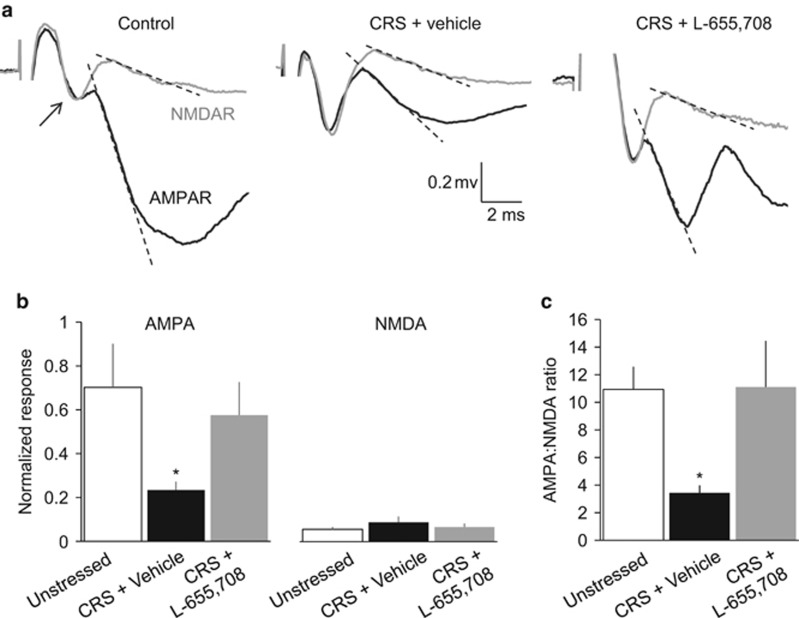Figure 6.
L-655,708 rapidly reverses stress-induced weakening of AMPAR-mediated synaptic transmission in TA-CA1 synapses of the rat hippocampus. (a) Representative traces showing the AMPAR- and NMDAR-mediated components of the fEPSP, recorded extracellularly in SLM of area CA1 in response to simulation of TA afferents in saline lacking added Mg2+. Traces are shown before (black) and after (gray) addition of 50 μM DNQX to block AMPARs. Traces were recorded from slices taken from unstressed controls (left) and rats subjected to 10 days of CRS then given an injection 24 h earlier of either vehicle solution (middle) or L-655,708 (right). (b) The mean slope of the relationship between AMPAR- (left) and NMDAR-mediated response (right) and FV amplitude over a range of stimulation intensities from the three groups of animals. The slope of the AMPAR-mediated responses was decreased significantly in slices from vehicle-treated CRS rats (red) compared with slices from unstressed (blue) or L-655,708-treated CRS rats (green) across the range of stimulation intensities (1-Way ANOVA, F(2,17)=3.675, p=0.047; n=5 unstressed, 8 CRS+vehicle, 7 CRS+L-655,708; *p<0.05, LSD post hoc test). There were no significant differences in NMDAR-mediated responses (1-Way analysis of variance (ANOVA), F(2,17)=0.549, p=0.588). (c) AMPA:NMDA ratios were computed from the initial slopes of the responses in each slice before and after application of DNQX (shown by dotted lines in a). AMPA:NMDA ratios were decreased significantly in slices from vehicle-treated CRS rats compared with slices from either unstressed or L-655,708-treated CRS rats (one-way ANOVA F(2,17)=4.345 p=0.03; n=5 unstressed, 8 CRS+vehicle, 7 CRS+L-655,708; *p<0.05 compared with unstressed and CRS+L-655,708, LSD post hoc test). A full color version of this figure is available at the Neuropsychopharmacology journal online.

